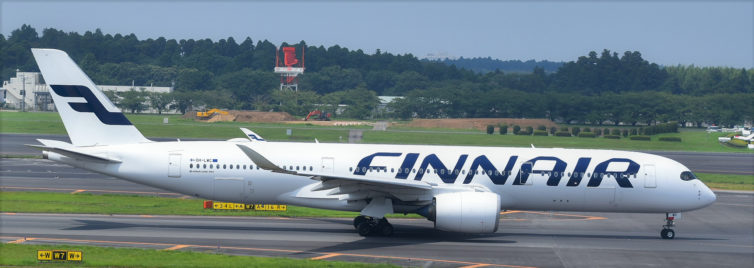
A Finnair Airbus A350-900 at Narita – Photo: Alec Wilson | FlickrCC
We love getting a glimpse behind the scenes at the people behind airline operations. So when we flew to Helsinki to learn about Finnair, we sat down for a chat with Sara Mosebar, the queen of the airline’s Airbus A350s! Well, formally her title is “A350 Program Manager.” But she may as well be aviation royalty based on her rsum. After getting her aerospace engineering degree at the University of Texas at Austin, she started her career at Boeing. And just a few years after joining Finnair’s A350 team as a Fleet Engineer, she was promoted to head the airline’s entire A350 program. It’s a big role, since the A350 is the flagship of Finnair’s long-haul fleet.
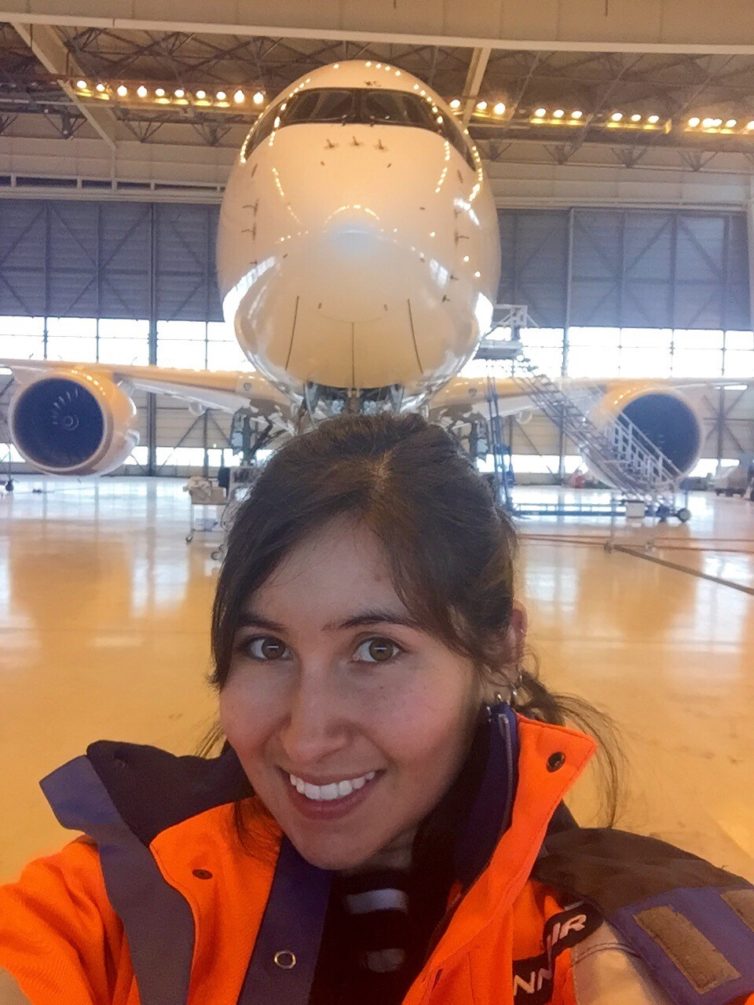
Here is Sara with one of Finnair’s A350s – Photo: Finnair
Here in part one of our interview, we discuss Sara’s responsibilities as person-in-charge of Finnair’s A350 fleet, her experience transitioning from Boeing to Airbus airplanes, and the highlights of the Finnair A350 passenger experience. We also see how her team tackled teething problems with new aircraft, as well as plans for expanding Finnair’s A350 route network. If you’re an AvGeek, consider it required reading!
We sat down with Sara at Finnair’s headquarters at Helsinki Airport. We were joined by Satu Haataja, one of the airline’s communications representatives.
Q: How did you become a fleet engineer?
Sara: I have a bachelor’s in aerospace engineering, and after my university studies I went on to join Boeing as a fuel systems specialist. After that I had the opportunity to move to Finland and come work for this airline as an A350 fleet engineer. As a mechanical systems specialist for fleet engineering, I was responsible for technical knowledge, upkeep, and airworthiness of all mechanical systems on board, like the fuel systems, hydraulics, ventilation basically anything that has moving parts, we are responsible and answerable for. For me, that meant getting to learn how all the systems work. When I was hired, I took a type course where I went through the aircraft system by system, component by component, and learned how every piece of the airplane works.
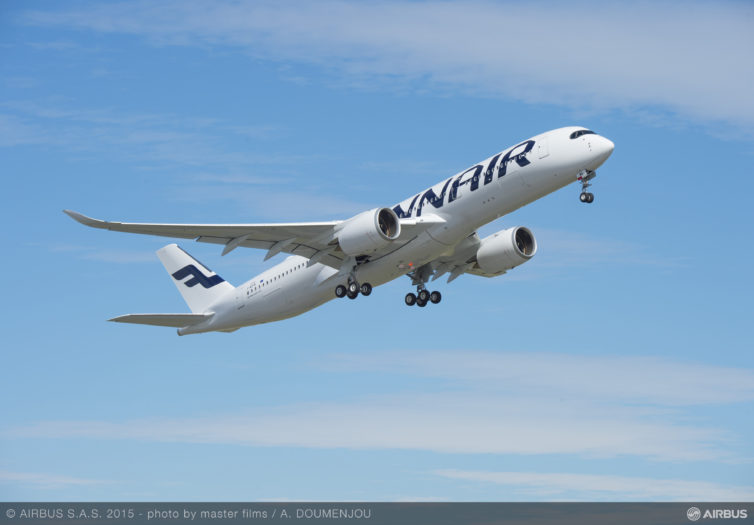
A Finnair A350 on its test flight – Photo: Airbus & Finnair
Q: What was it specifically that attracted you to come work at Finnair?
Sara: It’s the perfect size of airline for me. It’s not a small airline, but it’s not too big. I really wanted to work with the airplanes, and I get to sit in the hangar looking out at the airplanes every day. When I want to check on a system or go work with mechanics, my airplanes are right there, which is not a luxury that fleet engineers at some other airlines have.
BONUS: How to Apply, Interview, and Land An Airline Job!
Q: Before you joined Finnair you worked at Boeing. How transferrable were the skills you built there when it comes to working on the Airbus A350?
Sara: The skills were quite transferrable. The basics of an airplane don’t change from system to system. How Airbus or Boeing may implement their solution may have some differences, but overall, a fuel pump will be a fuel pump regardless of what aircraft it is on. An air conditioner will be an air conditioner. It’s a matter of being familiar with the technology on that airplane.
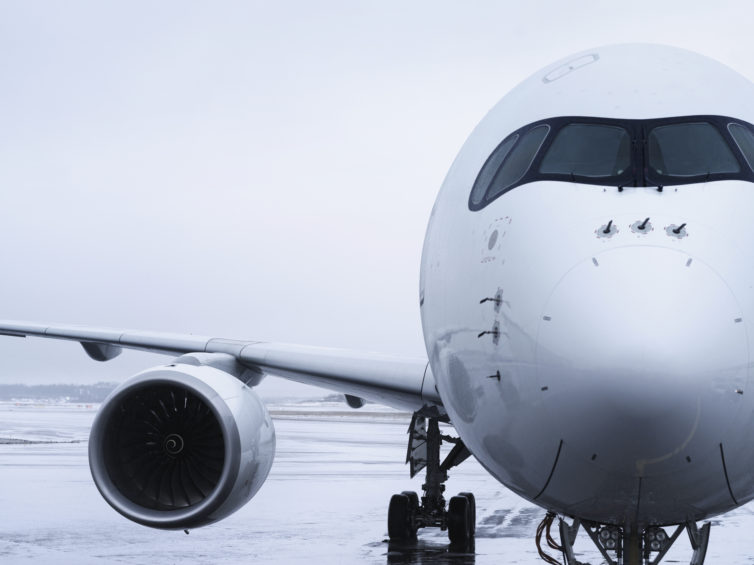
Photo: Finnair
Q: Who on the Finnair team do you spend most of your time with?
Sara: Especially now as a program manager, I work with all the divisions within the company. My work extends from the initial delivery of an aircraft all the way to maintenance, planning, and production. I work with dispatch controllers, pilots, and with all the people doing aircraft maintenance. I get to see and work with every part of the company. My main role in life is to support the A350 and make sure it is safely operated for our consumers and our airline.
Q: Walk me through a day in your life.
Sara: It normally starts in the office, talking with maintenance control and asking how operations went during the evening. I work with the fleet engineers who support me to make sure regular maintenance tasks are completed, and to plan how we can improve efficiency and the customer experience. I will go talk with the cabin engineers and ask how things are going on board the airplanes. Mostly it is a coordination role. By noon my whole schedule is usually derailed and it’s a matter of managing whatever comes up.
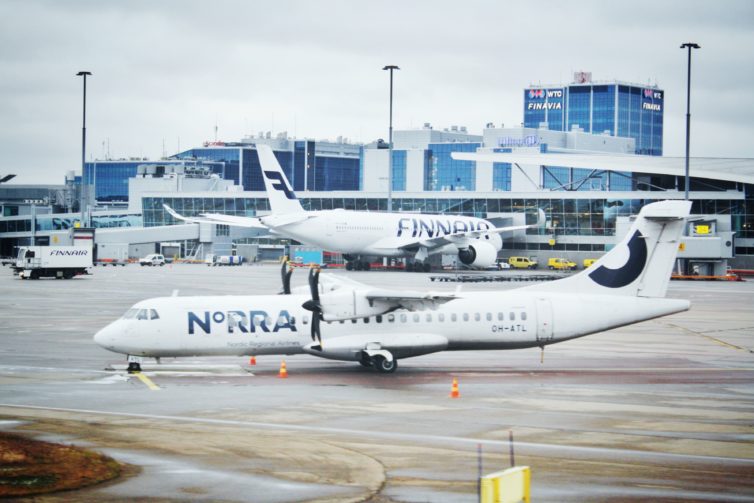
Photo: Manu Venkat | AirlineReporter
Q: What did the airline do to celebrate the entry of the A350 into the fleet?
Satu Haataja: We had a very nice delivery ceremony in Toulouse, which we took many of our employees to. One special element was that we had a raffle for employees and we took altogether three flights full of employees with the A350 to Lapland to meet Santa Claus there. The employees really appreciated it it was very special.
BONUS: Reactions After My First Airbus A350 Flight
Q: When you first started taking delivery of the planes, how was it decided which routes the A350 would fly?
Sara: We were trying to phase out the A340s, which were operated primarily to our Asian destinations. So as one A350 came in, an A340 went out. After the replacement of the A340s we had eight of them at the time we started expanding our destinations within Asia. Now that we’re in a growth phase, we’re looking to open new destinations with the A350, starting next year in March with Los Angeles. So we will finally get to serve the American market with the A350.
Video Caption: While the A350 handles Finnair’s routes to Asia, its A330s are responsible for routes to the US.
Q: From the perspective of the aircraft maintenance teams, was it a big process training people to work on the A350?
Sara: Prior to entry into service, Finnair started working with Airbus to make preparations for the A350’s introduction. It’s not just a matter of maintenance staff; it’s also about training flight crews, and every element of the company. The maintenance personnel go to a type course that is ten weeks long, where they get familiarized with all the elements of the A350. After that, it’s fairly similar work to what they were doing before. There is some difference in the level of technology onboard the A350, and the maintenance philosophy is a bit different on the A350, but the systems are often fairly similar to what they were working on before.
BONUS: Jason Watches the Airbus A350-1000 Fly For the First Time
Q: When a new plane rolls out, there are sometimes issues that come up. Were there any that arose for your team with the A350, and if so, how did your team address them?
Sara: Finnair was lucky in that we were one of the earliest customers of the A350. We had #18 off of the assembly line. Finnair had an ambitious approach to get the A350 into service. We used it to replace our A340s because we saw a possibility to increase our fuel efficiency and reduce our emissions by about 25%. We immediately started phasing out our A340s as soon as we got our A350s. When you take a new product, there will always be teething problems. We had to work closely with our partners, like mechanics at outstations and Airbus, to adapt to this new aircraft. There were challenges in the early months when we had only one or two airplanes. But we moved forward and we’ve recently celebrated our three-year anniversary and we’re matching worldwide A350 reliability levels despite having one of the highest daily utilization rates.
One of the really unique things about doing entry into service for the A350 and being one of the earliest operators is seeing how close the A350 community is within the airlines. Most of the airlines operating it talk to each other on a regular basis to work together and support the fleet across airlines. It’s like being part of a community, especially now that there are about twenty operators.
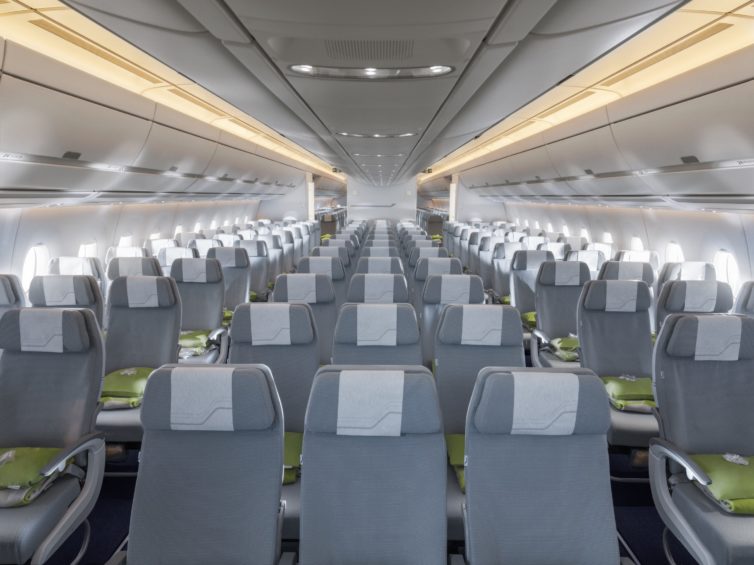
Photo: Finnair
Q: When you take delivery of a new A350, what do you have to do to get it ready to enter service?
Sara: We will be taking delivery of our next aircraft in December. After the aircraft is delivered from Airbus, we take it into our hangar for post-delivery modifications, where we install the Finnair-specific decals and our Marimekko interiors all the finishing touches that make the Finnair A350 unique. That process takes about a day, and the next day the aircraft can enter service.
Q: What makes the A350 special in terms of the passenger experience?
Sara: We’ve actually worked with a Finnish design company to bring the unique ’œNordic Experience’ onboard, which is essentially a feeling of openness, lightness, and nature. We also have, for the first time on the A350, a customized light scheme where the lights dim very gradually as we take off, and come on gradually on arrival, like a sunrise. In addition, we have an aurora borealis experience onboard, which I think is really cool!
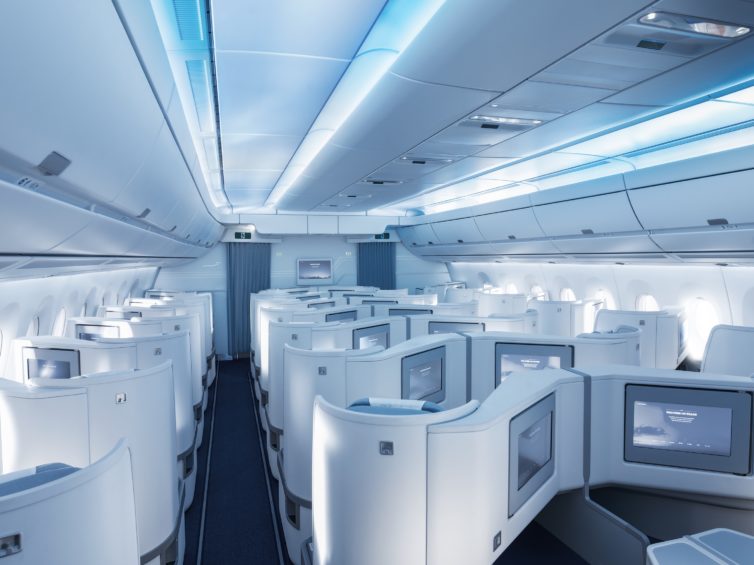
Photo: Finnair
Q: Is the plan for the A350 to start taking over routes that are operated today by the A330?
Sara: We don’t have any plans to change our A330 fleet at the moment. The A350s we will receive will be growth opportunities for expanding Finnair.
Q: We saw recently that Finnair plans to launch a true Premium Economy product. Will that be coming to the A350?
Sara: Yes, it will be coming to the entire widebody fleet.
BONUS: SAS Plus: Taking the Edge Off Economy Class Travel
Q: How many more A350s are going to be delivered to Finnair?
Sara: Currently we have a fleet of eleven aircraft. We will be receiving eight more: one in December, and the rest between 2019 and 2021.
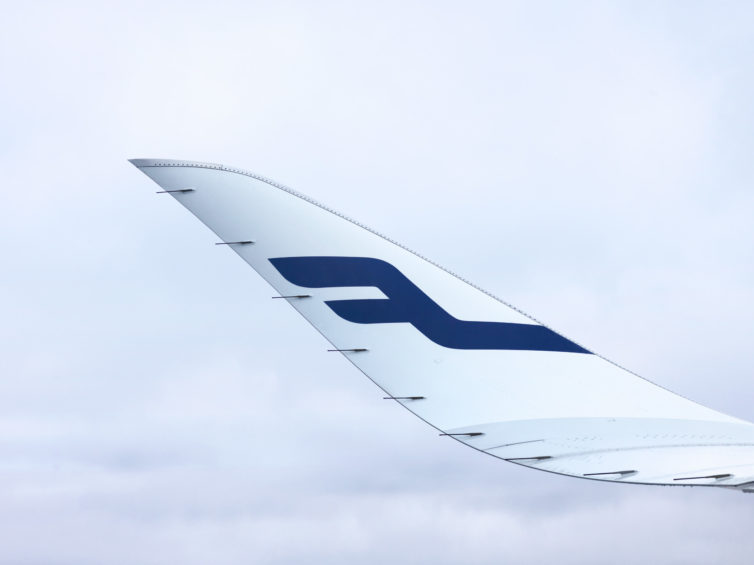
Photo: Finnair
Q: Might more A350s be added to the fleet at a later date?
Sara: We’re always reviewing our opportunities for growth and future strategy building. At this time we don’t have any plans for a new order, but we’re always considering how we will expand in the future.
Update 12/11: We have now published the second part of the interview and give you a chance to win a model of a Finnair A350 in a special Marimekko livery!
Now it’s time for us to hear from you! Share your thoughts in the comments section below.
Comments are closed here.
You can not eat Marimekko.
Food from BKK in economy class is shit and in business is it crap.
From HEL to east bound is it okey in economy and very delicious in business.
Having flown HEL-BKK-HEL each winter for about 5 years now, in my experience 3 of the 4 meals are always good and one disappoints. I have no idea how that happens. Always 3-1.
The fare on Finnair is very attractive to Asia probably due to the fact they are flying a very economical aircraft, compared to their rivals serving the same market… The seats on Finnair ‘s A350 are very comfortable, with the quiet aircraft making up a very competitive products…
As a 32-year employee of the Boeing Company, I have seen my share of the industry. The market, equipment, design, technology, and regulation all evolve. The one thing that has not changed is that our effectiveness in whatever aviation role we serve is based on the strength of our team and the inter-relationships that go into being that team. Over the years I have enjoyed many productive and rewarding relationships in the industry. And just a few short years ago I had the privilege of welcoming Sara to our Boeing team. She proved to be the fastest learning engineer I have ever worked with. Her technical abilities were immediately evident and it was not long after that I came to realize that her interpersonal skills, social intelligence, insight and intuition were all second to none. So, I am not surprised to see her thriving in this role of significant responsibility at an outstanding airline, just as I will not be surprised to see her performing admirably at the next level.
I was fow with mayfader bfom Ham to Hel wit a carvelle to Hel and afterrwradtoh Kongkong. I was 23 Yeaers old and In my Memories it w aas a nice Flight. I was ma first one. Spec via west berlin. Pan am to Hamburg with B727. And then see the cool nordic FA. As a Boy was is great and i got a relal good treatmenr
v